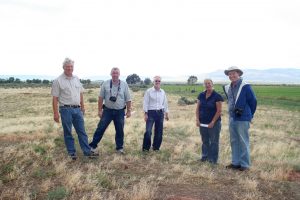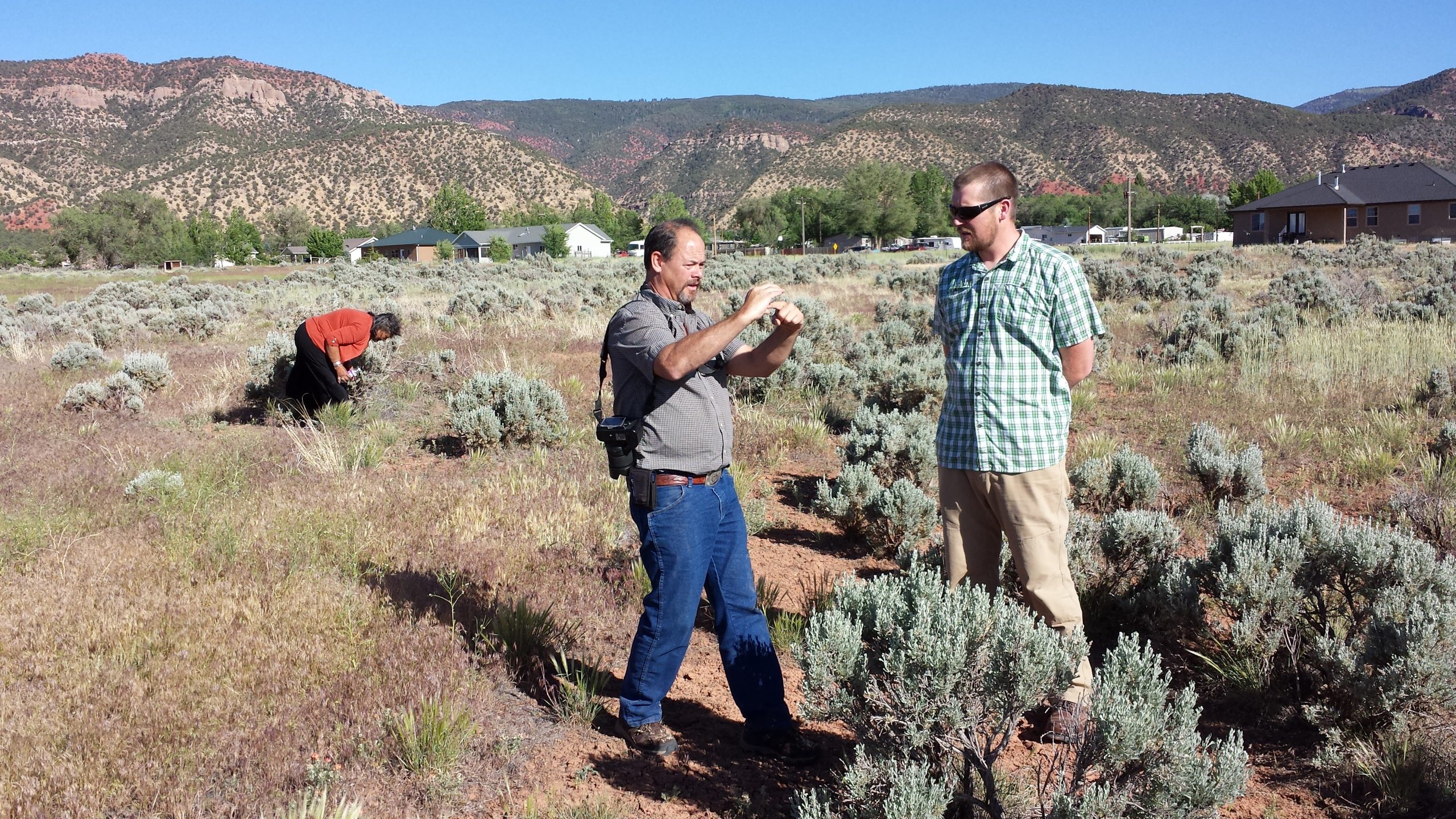Fall 2013
Through a fortuitous collaboration of agencies and organizations, the Conservancy has acquired Paragonah Mounds, a Fremont village in Utah’s Parowan Valley. Although, according to historical documents, the site had more than 400 mounds covering close to a square mile in the late 1800s, the largest remaining intact portion is a 12-acre site containing 28 mounds. Nonetheless, the site, which dates between A.D. 700 and 1300, is still one of the largest Fremont villages known in the state. While farming and residential development have destroyed much of the enormous site over the years, what remains is well preserved.
The site’s acquisition is a remarkable story of collaboration that began with the unfortunate 2008 disturbance of a site dating from the Archaic through Fremont periods by the Utah Transit Authority (UTA) during the construction of a light rail line in Draper, Utah. Consequently, the Army Corps of Engineers, the permitting agency for the project, issued a notice of non-compliance and a stop work order to the UTA, penalizing them with a substantial fine. A portion of the fine was allocated for the acquisition of another significant archaeological site in Utah to “replace” the one that was damaged. The UTA contacted the Conservancy for assistance in the identification of an appropriate site that could be established as a permanent archaeological preserve.
Seeking input from experts in Utah archaeology, the Conservancy contacted several major universities in Utah. Rich Talbot, director of The Office of Public Archaeology at Brigham Young University (BYU), presented the Conservancy with a list of important endangered sites in the state. After visiting the sites, the Conservancy determined that Paragonah Mounds was the best candidate.
The site was owned by Southern Utah University (SUU), and it was endangered by an adjacent residential subdivision. The UTA paid $108,000 to the university for the land, which is to be established as a Conservancy preserve. Additional funds were included for fencing, the creation of a long-term management plan for the site, an educational program, and the establishment of a stewardship fund.
 Paragonah Mounds was partially excavated by archaeologist Neil Judd between 1915 and 1917, at which time about 50 mounds were reported to be intact. In the 1930s, the Works Progress Administration (WPA) conducted limited excavations at the site, and in 1954 the University of California – Los Angeles began a series of field schools, excavating close to 30 mounds and greatly contributing to the reconstruction of the culture history of the Fremont in the Parowan Valley. In the late 1950s, the property containing the remains of the site was donated to the Branch Agricultural College (later known as Southern Utah University) for agricultural purposes, but over time the focus of the university’s curriculum changed and the land was largely forgotten. Continued plowing and farming of adjacent fields, and the later construction of a residential subdivision immediately adjacent to the site, posed ongoing threats.
Paragonah Mounds was partially excavated by archaeologist Neil Judd between 1915 and 1917, at which time about 50 mounds were reported to be intact. In the 1930s, the Works Progress Administration (WPA) conducted limited excavations at the site, and in 1954 the University of California – Los Angeles began a series of field schools, excavating close to 30 mounds and greatly contributing to the reconstruction of the culture history of the Fremont in the Parowan Valley. In the late 1950s, the property containing the remains of the site was donated to the Branch Agricultural College (later known as Southern Utah University) for agricultural purposes, but over time the focus of the university’s curriculum changed and the land was largely forgotten. Continued plowing and farming of adjacent fields, and the later construction of a residential subdivision immediately adjacent to the site, posed ongoing threats.
In 2012, Talbot referred the Conservancy to James McDonald of SUU and negotiations to acquire the site quickly ensued. Nearly a year later, the Conservancy, working together with the UTA, the Corps, the Utah State Historic Preservation Office, BYU, SUU, and tribal entities, has established Paragonah Mounds as a permanent archaeological preserve, its third in the state of Utah. It is important to note that, in a world of shrinking budgets and spending cuts, instead of the proceeds from the sale being used by SUU to cover administrative and maintenance expenses, the money will be used for an endowment that will go toward a Native American anthropology scholarship as well as support for SUU’s archaeology repository.
The disturbance of one archaeological site has resulted in the preservation of another—a large, important Fremont village that will be available for public education, professional research, and traditional use by native groups. Additionally, the Office of Public Archaeology received significant funding to analyze and curate existing Fremont collections housed at BYU.
Despite over 30 years of active involvement in the acquisition and preservation of archaeological sites, this is the first time the Conservancy has seen this type of progressive resolution. The Conservancy hopes that this type of mitigative action will become standard policy for future archaeological violations.




